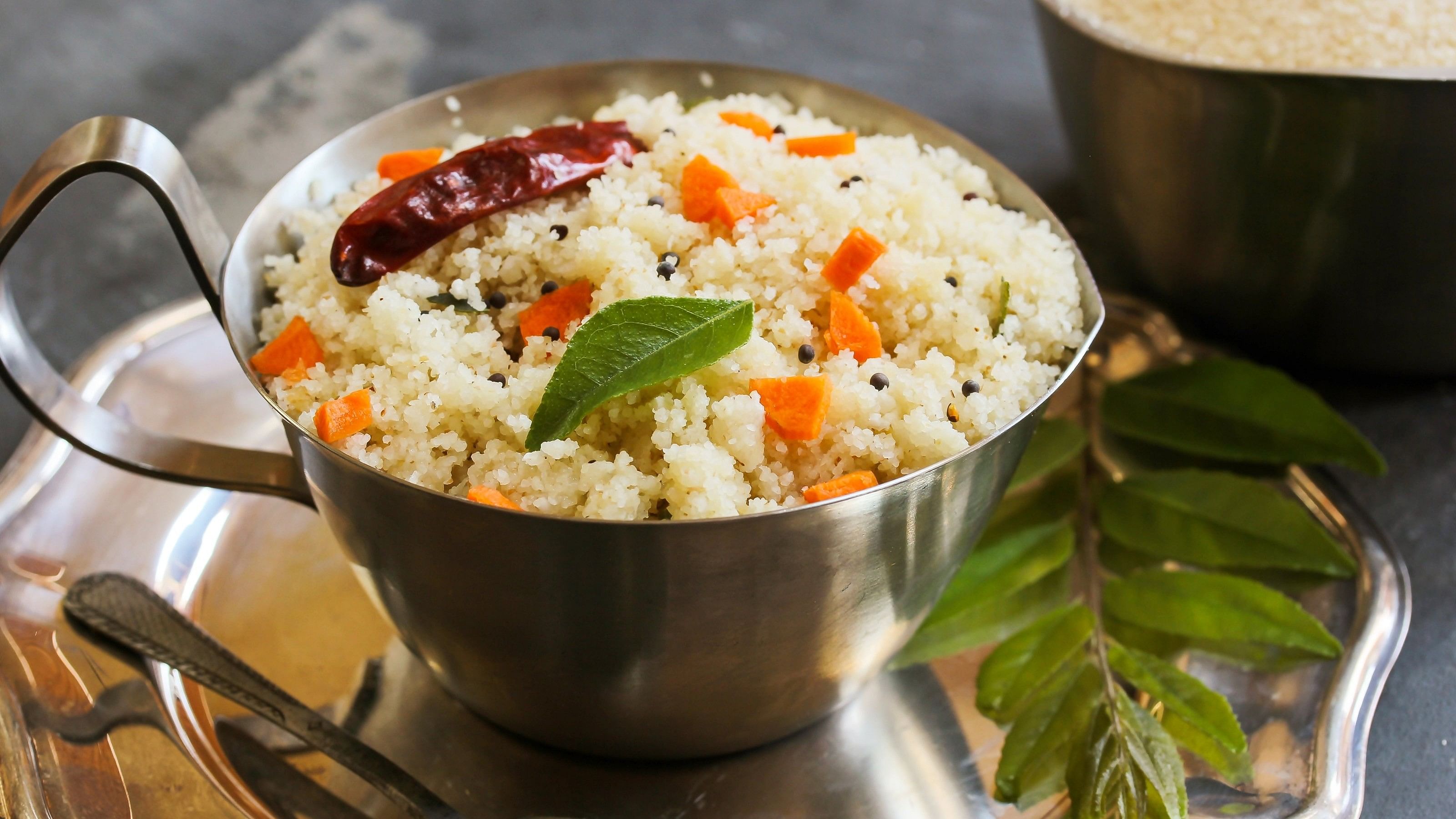
Image for representation.
Courtesy iStock
As I pack my daughter’s bags to send her off to college, sneaking in a thindi here and a ready-to-cook meal mix there, I am left to wonder about all the miles these foods will accrue, by the time she’s in her dorm room. I imagine her heating up some water in an electric kettle, pouring it over a bowl of Ragi Hurihittu mix, swirling it all together with a dollop of desi ghee, and feeling satisfied as she gets ready to take on a new day. On the one hand, I’m happy and proud that I’ve trained her well to stir up some easy home-style meals when she’s feeling particularly homesick. But on the other hand, I’ve packed pudis, pickles (homemade), snacks (store-bought), breakfast options and ready-to-cook mixes like upma, avalakki and khichdi, all to traverse thousands of miles to create a comforting space for her, one that will give her a taste of home in a blink.
When we travel, we want to feel at home, which is not just a funny oxymoron but also a moral dilemma. We want to carry the things we hold close to us, as anchors to our roots and to feel good about ourselves. And when we travel back home, we want to carry back tokens from the places we’ve been to — which is another problem altogether. I’ve carried back everything from fresh fruits (golden kiwi from New Zealand) to vegetables (asparagus from the US), tomato paste and olive tapenade from Spain, to TimTams and Anzac biscuits from Australia.
Travelling in itself is a greenhouse gas emission monster, and adding food to it can’t exactly be beneficial to the planet. Where do we draw the line? How much is too much? How can we build a better pathway for travel and food in sustainable terms?
There are no straight answers and solutions are mostly hinged on personal experience. Still, it pays to understand the basics, to decode what some of the terms in this domain actually mean.
Carbon footprint: Think of the total amount of greenhouse gases (including carbon dioxide and methane) that are generated by our actions. The average carbon footprint for people in India is about 1.6 tonnes per year as against the global average per capita emission of 4 tonnes per year.
Food miles: A measure of how far food has travelled before it reached you, how much pollution was caused by the mode of transport, and to examine the environmental impact of foods. On average, the everyday Indian meal is fuelled by around 1,200 km of travel by ingredients. When you’re travelling, it’s hard to think about these two big ticket items on the path to sustainability. Still, some easy-to-implement tactics can keep you on top, even if you duck down for a cheat now and then. It’s important to acknowledge that travel could negatively impact local resources like food and housing. It’s also important to understand that eating local could come with a hidden cost.
Air travel is a major pollutant, leaving behind unfavourable gas emissions. As much as possible, travel by land to mitigate this when you can.
Shop local may be all fair to say — but whether it’s food or gifts, travel tends to commodify key cultural aspects of indigenous people. You have to be careful not to consume, but to immerse and participate.
Choose businesses that support their communities when travelling — whether it is employing locals, showcasing their culinary and artistic talents, or taking the right steps towards preserving their natural resources. This way, you too will contribute to them in meaningful ways.
Reduce waste, as much as possible, while travelling. Carry your own steel water bottle or coffee mug, cloth bags to buy fresh produce, and containers for takeaways.
Don’t just take, but give. This doesn’t necessarily apply only to commercial transactions, but to knowledge sharing too. For example, if you’re learning a new skill or joining a cooking class in a new place, find points of intersections with your own background and see how you can contribute by sharing those stories and lessons with your hosts and fellow travellers.
Eat local — but don’t let it be restricted to eating out. Go to the local market, interact with farmers and vendors, pick up their wares and stir something in your own rental kitchen. There’s no joy greater than infusing a little magic of your own into a dish you concocted with whatever the season and the place had to offer.
Travel has the power to foster a sense of empathy among travellers and locals alike. To find differences in lifestyles and perspectives is not just an eye opener but an equaliser, and contributes to a healthier planet in its own way.
While I scramble around to help my daughter settle into her new life, with a countertop as a gateway to home, fitted well with a kettle and a rice cooker, I look forward to learning from her as she navigates the local markets to rustle up a down-home meal. It could simply be rasam on some days when there’s a nip in the air, but she’d have to build it up with non-naati tomatoes available in her immediate reality and breathe life into it with a snap of my homemade pudi. Still, it will matter, and that counts.
(Ranjini is a communications professor, author, and podcaster, straddling many other worlds, in Bengaluru. She’s passionate about urban farming and sustainable living, and can mostly be found cooking and baking in her little kitchen, where, surrounded by heirloom coffee kettles and mismatched tea cups, she finds her chi.)